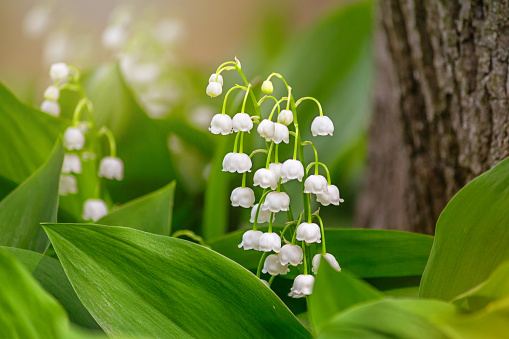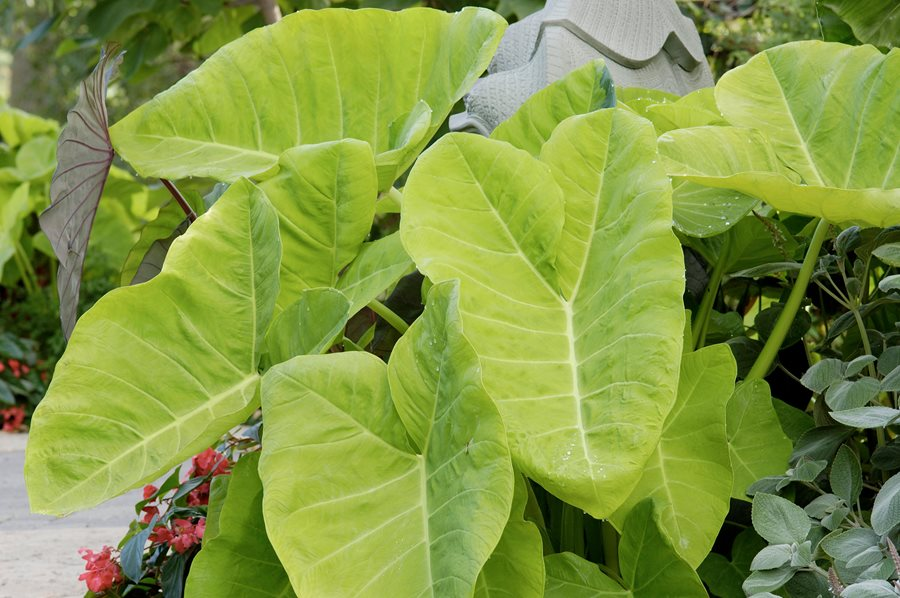- Get link
- X
- Other Apps
- Get link
- X
- Other Apps
Impressive plants that absorb more water - Solution for drainage problem in garden
Water is most important for life to live on Earth, but too much of water can cause a lot of problems in our gardens. Poor garden drainage will block oxygen from getting into the roots of plants, and that kills the roots. And it also creates an environment perfect for fungus and further damage the plant. Waterlog also spoils the appearance of our loving outdoor living spaces. In this blog we are going to see the list of impressive plants absorb more water from your soil.
You can take up these steps to handle drainage problems in your garden. We can maintain moisture level of our garden soil usng plants. Yes!! There are lots of moisture-loving trees, herbs, shrubs and flowers which are doing a great job of soaking up water.
1. Lily of the Valley:
Attractive flowering plant with bell-shaped, sweetly scented white flowers. These are perennial plant which lives more than two years and spreads rapidly by spreading stems with upright shoots.
Plant them in the season with cool temperatures which will allow them the necessary potential. It can be divided after the month of November or December and then the new divisions can be planted.
Note: This is a poisonous plant, so it should be kept away from children.
2. Indian Grass:
Indian grass, Sorghastrum nutans, is a warm-season, bunch-forming type of grass. This Indian grass are known for their height and produce glorious ornamental specimens. The leaves can grow 3/8 inch (1 cm.) wide and 18 inches (45.5 cm.) long with thin tips and smooth surfaces.
It prefers full sunny day, and it soaks up water well. It flourishes in deep, moist soil, but it can even survive in clay or sandy soil as well.
This grass is little hardy but can grow easily. Once established, it requires a very little care.
3. Globeflower:
Globeflowers are stunning massed beside ponds, lakes and streams. They are perfectly suitable to plant in rain gardens and boggy areas, and they make a good appearance in borders where soil does not dry out.
It is best start this plant from cuttings or by purchasing a young plant, because seeds can take up to two years to germinate.
In addition to their impressive look, globeflowers are also considered as valuable for providing food for hungry pollinators, such as bees and butterflies.
4. Ferns:
Ferns is the great option to add some greenery visual to your home. They also beneficial for filtering out the toxins and may act as a bioindicator for an ecosystem's health. Different ferns can bear excessive moisture in the soil, and they can be planted at in very wet areas of your garden.
Following ferns will grow in damp conditions:
- Cinnamon fern
- Lady fern
- Royal fern
- Holly fern
- Sensitive fern
- Ostrich fern
- Painted fern
- Marsh fern
5. Iris:
The tall, most beautiful Iris, six-petaled flowers, named after the Greek goddess who steered rainbows, comes in many magical colors.
They can provide impressive colors to your flower bed during late winter through early spring. Once established this plant need very little care and multiply easily. They absorb a lot of water from soil.
Irises will bloom best in full sunny day. They can bear as little as half a day of sun, but it’s not stable. Without enough light, they won’t bloom. One of the beautiful plants absorb more water from soil.
6. Elephant Ear:
The elephant ear plant, Colocasia provides a tropical effect in nearly any landscape position. These plants are commonly known for their large, tropical-looking leaves, which is similar to elephant ears.
They come in different sizes and colors, and they are used as background plants. Need to water them during dry day because they require a lot of water.
7. Red Maple:
Acer rubrum, gets its name because of its brilliant red leaves. This is
tree type. We know that red maple leaves can turn yellow or orange in the fall
too. Deep, moist soil helps red maples to grow healthy.
Red maples grow well in sunny or shady spots, dry or wet soil, and high or low elevation.
8. Trumpet Creeper:
This is a great plant for growing on fences where you have a lot of moisture. This is a vine plant with impressive flowers, and it is also a fast-growing perennial. Growing these creepers is really easy and although some gardeners consider the plant invasive, with little care, and this can be kept under control.
This plant is also known for its way to attract butterflies to your garden.
9. Monkey Flower:
Monkey flowers, with their irresistible small “faces,” it provides a long season of charm and color in both moist or wet parts of your garden. You can plant it in the wet area of your garden, these flowers will absorb a lot of water and make an attractive border.
You should space them respective to the size of the plant, and they need partial shade, especially in the sunny afternoon. Keep reading the list of plants absorb more water from soil.
10. Cattails:
Every part of cattails is beneficial to a number of species, including humans. These are tall sturdy plants that can grow almost 10 feet tall (2 m.). They have rhizomatous roots, heavy, long, cylindrical brown flower spikes that can add height and texture to the aquatic garden.
Cattails grow around ponds and small water areas because they love water. They are sometimes difficult to control.
Avoid troublesome absorption plants:
Some plants absorb more water, that one should think twice before planting such trees in garden. Example, Eucalyptus, a fast-growing tree, sometimes used to drain water swamps. There are many water-sucker species of eucalyptus have led impact the environment. Generally, a eucalyptus tree uses anything from 100 to 1000 litres of water/day. A single pine tree uses from 50 to 600 litres of water/day. One willow tree absorbs tons of water throughout its life.Planting the right kind of plants is one way of coping with this situation.
drainage system for gardening
Gardening
gardening ideas for beginners
solution for drainage problems
water absorbing plants
- Get link
- X
- Other Apps










Comments
Post a Comment